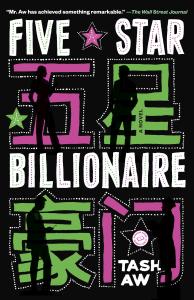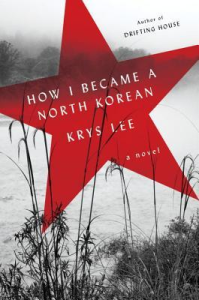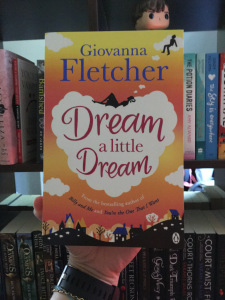By Trix Wilkins

How long was it from the time you finished Little Women (for the first time) to the time that you started thinking about writing The Courtship of Jo March? Just curious about how long it took from the unsettling feeling of literary discontentment to the moment of coming up with your own concept of an alternative plot. Tarissa, In the Bookcase
I first read Little Women twenty years ago and I loved it. It became my favorite novel only to be superseded by Jane Austen’s Pride and Prejudice that same year (by a smidge!), and Persuasion about ten years later.
The thing I didn’t realize at the time was that I had only read Part 1. Part 1 that ended with Beth having recovered from scarlet fever, Mr March home safe from the war, and Meg engaged to John Brooke.
I had no idea Part 2 (Good Wives) existed until I got to university, and how excited I was by the discovery. “Castles in the air” had been one of my favorite chapters from Part 1, and how eager I was to find out what had become of those dreams.
Oh my was Good Wives a shock to read at the age of seventeen! Jo hadn’t become a travelling author, Laurie hadn’t pursued music, Amy had abandoned art to become “an ornament to society,” and Beth…The only fate I was happy to read was Meg’s, for John did love her as dearly as she had hoped, and Demi and Daisy are two of the most adorable children in literature.
I could not pick up Little Women for some time. I do believe that years passed. For years I didn’t want to read anything of Louisa May Alcott’s, instead opting for Jane Austen’s novels, William Shakespeare’s comedies, even the tragedies of Les Miserables and the Count of Monte Cristo became preferable holiday reading to what had happened to my favorite fictional sisters.
One Christmas I tried to read the two halves continuously, thinking perhaps I would feel better about both halves in context. I didn’t. I still couldn’t reconcile how the two could belong to the same story – still felt dissatisfied with Beth’s passing, Jo and Laurie abandoning their passions, and the switch of Laurie’s affections from Jo to Amy.
Ultimately I decided that I still loved Little Women Part 1 and so would read Good Wives (only until Laurie’s proposal). But after my best friend and I fell in love and married, I couldn’t read even until that point. I suppose part of it was the hubris of thinking that since I found being married to my best friend so blissful, Jo would have also.
The dissatisfaction didn’t come to anything except the occasional conversation with book-loving friends about the novel. We had our first child the year after the wedding and I was kept busy with baby one, house-hunting, finishing post-graduate studies, then baby two and working part-time. There wasn’t really the head-space for Little Women.
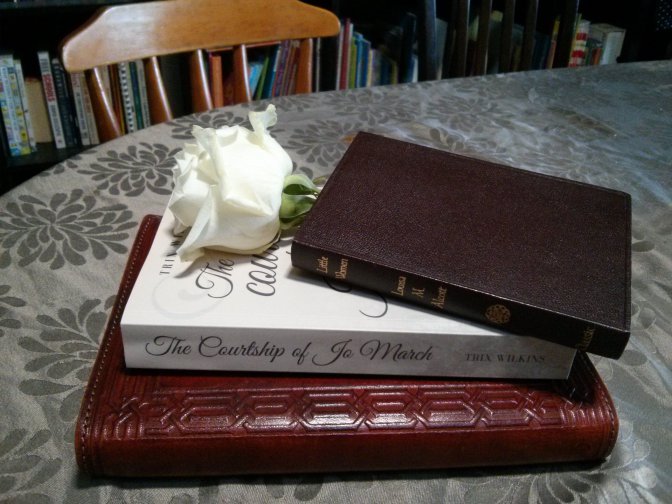
One summer about a year and a half ago (this was in the southern hemisphere), while on holiday with my family and perhaps the first time that we had truly relaxed (having just purchased our family home yay!), I was sitting on the couch next to my husband and started doodling how Laurie might have proposed differently.
What a shock it was to me to find, while I was writing, that no matter what Laurie said I still couldn’t get Jo to accept his proposal! And then I started thinking about all the reasons Jo had said no (I have a whole separate blog post on this, Why did Jo say no), and all the things that had to be in place for it to make sense for Jo to accept Laurie.
It wasn’t enough that he was her best friend – and it certainly wasn’t enough that he was rich, handsome and sought after. Jo didn’t care about wealth, status, looks, or what people thought. So first Laurie had to have the sort of character Jo could esteem and find attractive over the long haul. He had to move beyond the playmate while retaining his sense of fun.
Jo also had to know with absolute certainty that Beth wasn’t romantically interested in Laurie. And she had to be put in a situation where she would be able to recognize her own feelings, unfamiliar as any romantic feeling would have been to her at the time. She had to be given time and experience to enable her to discern what she was feeling and why.
But the biggest hurdle was Marmee’s advice. Jo relied on her mother’s judgment and trusted her so implicitly. For Jo to even be open to considering Laurie, Marmee’s response had to give her space to work it out for herself. Thus one of the differences in The Courtship of Jo March is their conversation about Laurie’s affection (see sample chapters).
Once these two scenes were written, the story kind of took a life of its own. I did not intend to write a book; I have many unfinished manuscripts that I haven’t had the heart or will to finish, but this was different. I almost felt like it was demanding to be written. And when I read Eve LaPlante’s Marmee & Louisa, that was the clincher.
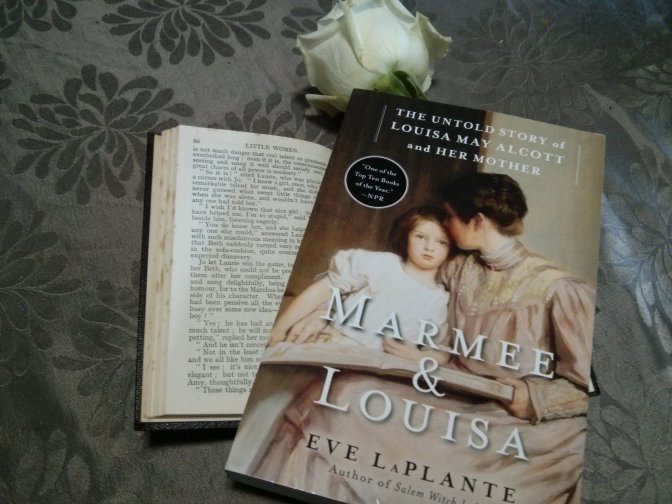
Louisa had given up Laddie for reasons lost to history; Elizabeth had died in devastating circumstances. And I just had to keep writing. I had to write of the life that Beth might have led, the love with which Jo might have been lavished that she had so richly deserved. I couldn’t amend real history – but with fictional history, the possible is limited only by the imagination.
It only became a book when my son needed unexpected surgery. I had this story in hand that I had absolutely enjoyed writing for no other reason than that I wanted to – and then came one timely word of encouragement: someone said it was worth turning into a book. So I turned it into an eBook for extra cash. Then when friends and family wanted hard copies, I had it printed.
In a nutshell, it took twenty years and marrying my own best friend to write The Courtship of Jo March; my son’s surgery to publish it. (If you’re wondering why I didn’t opt for Amazon, for about two days I did. Then I thought hang pragmatism and gave my business to a local printer, who moved heaven and earth to have the book ready in exactly the way I wanted by Christmas.)
The inspiration of other writersBefore writing your book, did you read other alternative variations of Little Women? Tamara
I wish I had to be honest! I hadn’t known any actually existed (probably should have looked for Beverly Lyon Clark’s The Afterlife of Little Women…). On one hand I’m glad I hadn’t read another variation so I could be happy with my own story line; on the other it would have been brilliant to learn from others (and simply know that there were others who felt the same way!).
The closest thing I’ve read to a full-length variation was Mending my mistakes (whose author is featured in an earlier post, Little Women, Marmee, and the weight of a mother’s word). The story explored the complexity of the situation surrounding Jo’s refusal in a way that made me think more deeply about that question whilst writing.
However, the book that was the impetus for the novel wasn’t a variation but a biography – as mentioned above, Eve LaPlante’s Marmee and Louisa. The doodles written on holiday I doubt would have progressed beyond my journals had I not read of the lives of both Louisa and her mother, and longed to create a world in which things turned out differently for them.
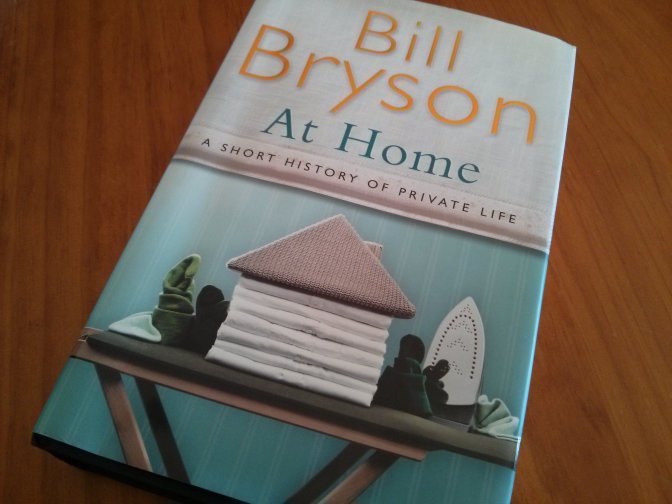
Another influence was Bill Bryson’s Home: a history of private life. It was in this book that I discovered the World Fairs of the nineteenth century, which got me to thinking more deeply about the Vienna World Fair of 1873 and inspired me to move the setting of the novel – 1873 would provide the circumstances that were impossible in the original.
I think those who say that Jo and Laurie would not have worked well in Little Women are actually right – but given a different time and circumstance, I believe they would have. The Courtship of Jo March aims to sketch out exactly that time and circumstance – the world in which Jo and Laurie would have been together and loved each other well.
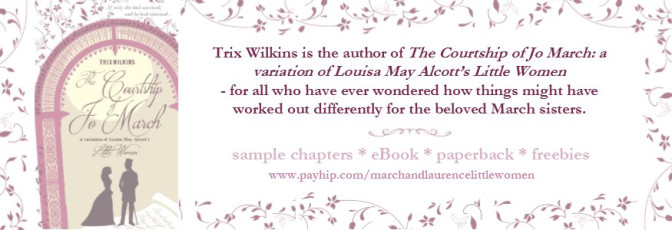
Share this:


